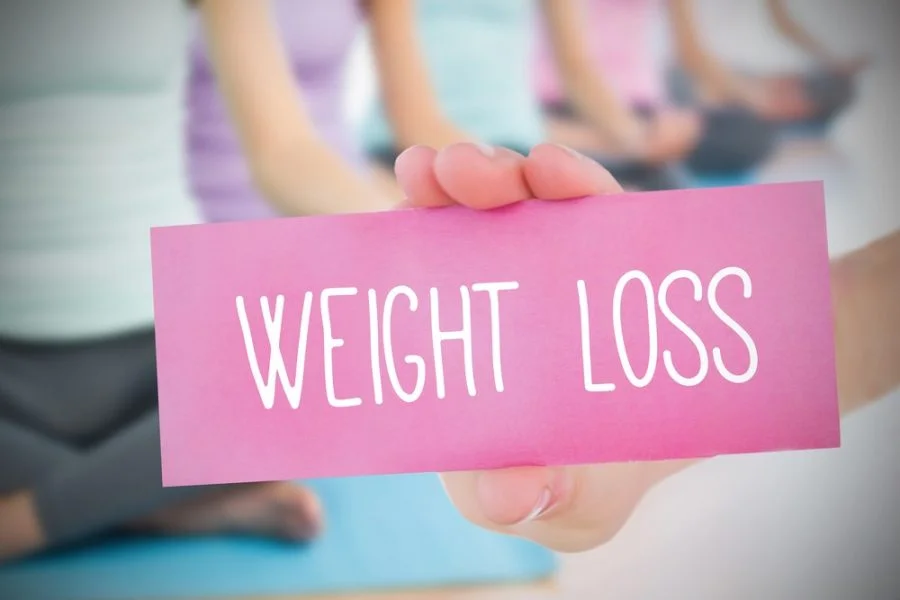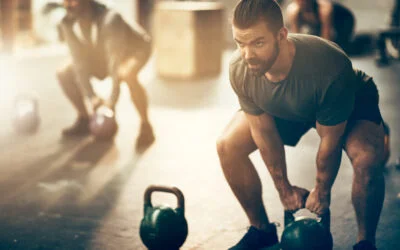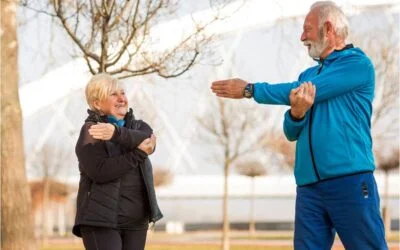Any kind of activities which required energy is known as physical activity. It must be any kind of motion except sitting or lying, through which you expend energy. For example walking, sprinting, playing outdoor games, taking stairs and doing household chores etc. However, all kind exercise is a type of physical activity but all kind of physical activity is not an exercise. Because exercise based on a structure, it must be pre planned along with repetition and proper sets. So, today we will learn about Moderate and Vigorous Intensity Physical Activity, which is a effective way of exercise in this modern era.
What is Intensity of Physical Activity?
Intensity refers to the rate through which activity is being performed or the magnitude of the effort required for activity or exercise. However, it can also be said as “How tough does someone work to execute the physical activity”.
The intensity of different forms of physical activities varies between the people. Physical activity depends upon previous exercise experience and comparative level of fitness. As a result, the examples below are provided only as a guide and will vary between individuals.
Metabolic equivalents (METs) are generally used to express the intensity of physical activity. MET is the ratio of working metabolic rate relative to their relaxed metabolic rate.
A MET is defined as the energy cost of sitting quietly and it is 1kcal/100. Is equal to the calorie consumption of kg/hour. It is estimated that compared to sitting quietly, a person’s calorie consumption is three to six times higher (3-6 MET) when activated from medium and six times more than when fully active (six MET).
What is Vigorous Intensity Physical Exercise?
Vigorous intensity physical exercise also called high intensity physical exercise. It is a physiological activity performed with a large amount of effort, resulting in a fairly rapid heartbeat and rapid breathlessness.
Your hard work will be considered very difficult, making it difficult to speak in full sentences. Activities such as running, cycling and single tennis are usually classified as vigorous.
The American Heart Association (AHA) recommends a mixture of moderate to vigorous intensity activity at a time of three or four days per week to reduce hypertension and cholesterol level.
Determining Exercise Intensity.
Although you may have an idea when you hit a vigorous level, you can definitely look at these specific markers to learn.
Talk Test.
It is the simplest way to determine if you’re at a vigorous level of exercise. With a strong intensity, you can speak only a few words at once, not in full sentences.
MET and Calories are Burned.
The effort needed for vigorous intensity exercise is defined by the Centers for Disease Control (CDC) as more than 6 metabolic counterparts, burning more than 7 kilocalories per minute. It is six times the cost of sitting quietly.
- Heart rate: Vigorous intensity is also defined by AHA, as an exercise at heart rate ranging from 70% to 85% of maximum heart rate. It varies by age and fitness level, so you should use the heart rate area chart or calculator to find this number for your age and gender.
- Rate of Perceived Exertion (RPE): If you rate your effort on the scale of Borg’s alleged labor, the vigorous intensity is 15 to 19, the limit you consider difficult as subject. Very difficult or extremely difficult according to the AHA.
What are The Benefits of Vigorous Physical Activity?
There are plenty of reasons to take your workouts up to one notch. Engaging in vigorous physical activity have many health benefits. Such as;
Weight Loss.

It is found that vigorous exercise can be an effective way to reduce unwanted pounds, especially by decreasing abdominal fat and glucose. In improving insulin metabolism and promoting cardiorespiratory fitness, especially compared to moderate activity levels.
Other studies have yielded similar results, including low blood pressure and blood lipids in people who exercise vigorously.(1),(2),(3)
Low Risk of Chronic Disease.
Lack of exercise can increase the likelihood of developing chronic disease such as coronary heart disease, osteoporosis and various types of cancer. A 2012 study followed more than 42,000 men aged 40 to 75 after 22 years and concluded that vigorous exercise lower the risk of chronic illness among participants.(4),(5),(6)
Improved Brain Health.
All exercises, but especially vigorous workouts, increases blood flow to the brain and gives oxygen to the frontal areas of the brain. It is shown among school going students, those who participate in vigorous activity have a better grade as well as in older populations.
A review on 2017 provide a link between regular workout and Parkinson’s disease or Alzheimer’s disease found that when people aged 70 to 80 workout moderate to vigorous exercise for 150 minutes per week within the last five years, they have 40% less chance of developing Alzheimer’s than sedentary individuals in their age group.(7)
Improved Mood.
It’s no surprise that exercise assist to improve your mood. According to a study in 2015, it is found a significant link between vigorous exercise and less depressive symptoms among more than 12,000 participants, while moderate levels of activity and walking had no effect on depression.(8)
What are The Vigorous Intensity Physical Activities?
Vigorous activity doesn’t just mean high-intensity running or competitive sport. There are a variety of options depending on your choice, such as;

- Jogging or running.
- Walking.
- Hiking.
- Cycling over 10 miles per hour or on steep climbs.
- Swim fast or swim in the lap.
- Dance, fast dancing and step aerobics.
- Strength training.
- Heavy gardening with excavator.
- Martial Arts.
- Play games with lots of sports such as basketball, hockey and soccer.
- Single Tennis.
- Court games such as handball, racquetball and squash.
How Vigorous Exercise Do You Need?
According to the health guidelines of the CDC, AHA and other health officials recommend the amount of moderate-to-acute intensity exercise needed to maintain health and reduce health risks. Basically 75 – 150 minutes per week and can be optional with moderate-intensity exercise at least 150 – 300 minutes per week, to achieve the fitness goal.
Find the Right Heart Rate Training Area.
These guidelines are minimal for maintaining good health. You can reduce your chronic illness and risk of gaining weight by working over the recommended amount of exercise.
Several activity monitors will be assesses at the time you spend for moderate-to-vigorous physical activity, so you can be more assured that you’re meeting minimal recommendations. But also make sure not to over expert yourself, especially when you’re a beginner. Listen to your body and consult your doctor if you have questions about adding more intensity to your workout regime.
What Is Moderate Intensity Physical Activity?
Moderate-intensity activities are those that make you run fast enough or loud enough, so you can burn three to six times more energy per minute when you’re sitting quietly.
One drawback of measuring the intensity of workout is that, it does not ponder the fact that some people have a higher level of fitness than others. Thus, walking at a speed of 3 to 4 mph requires 4 MET and a moderate intensity activity, regardless of who is doing the active young marathon runner or 90-year-old men or women.
As you can imagine, a brisk walk will be an simple activity for a marathon runner, but very difficult activity for aged men or women.
Types of Moderate Physical Activity.
Exercise specialists measure activity in metabolic counterparts or METs. A MET is defined as energy that takes to sit quietly. For the average adult, it’s about one calorie per 2.2 pounds of body weight per hour. A person who weighs 160 pounds will burn about 70 calories an hour while sitting or sleeping. Such types of activities are;

- Very fast walk (4 mph).
- Heavy cleaning (washing windows, vacuuming and wiping).
- Lawn Mower (Electric forming).
- Cycling (10-12 mph).
- Bad Minton.
- Tennis Doubles.
Benefits.
- A variety of moderate-intensity aerobic activity for at least 3 days per session for 30-45 minutes over a period of at least 1-3 months can improve cardiorespiratory endurance.
- Has significant impact on mental health.
- Lowers the tendency of metabolic syndrome.
- Helps in reducing body fat.
Frequently Asked Questions.
1. Which pair of activities will accomplish the most vigorous physical activity outside of school?
The pair of activities that will accomplish the most vigorous physical activity outside of school is hunting and walking.
Bottom Line.
Physical activity directly means the motion of the body that uses energy. Several activities such as walking, gardening, pushing a child towards a stroller, climbing stairs, playing football or dancing are the effective way of being active. For several positive health benefits, your activity should be moderate or vigorous.
Every week activities can be considered vigorous, moderate or mild in intensity. It depends on the extent to which you breathe and heart beat.
Only moderate and vigorous intensity activities can meet the needs of your physical activity. With vigorous activities, you get the same health benefits in half the time, which you seem to moderately do.
You can replace all your moderate activity with vigorous physical activity. However, light intensity activities do not increase your heart rate. Therefore, you should not count them towards fulfilling the recommendations of physical activity. Some of the example of these activities include walking at a casual pace, grocery shopping and lightweight household chores etc.
+8 Sources
Freaktofit has strict sourcing guidelines and relies on peer-reviewed studies, educational research institutes, and medical organizations. We avoid using tertiary references. You can learn more about how we ensure our content is accurate and up-to-date by reading our editorial policy.
- Physical Activity; https://www.hsph.harvard.edu/obesity-prevention-source/obesity-causes/physical-activity-and-obesity/
- Physical Activity for a Healthy Weight; https://www.cdc.gov/healthyweight/physical_activity/index.html
- The Role of Exercise and Physical Activity in Weight Loss and Maintenance; https://www.ncbi.nlm.nih.gov/pmc/articles/PMC3925973/
- Lack of exercise is a major cause of chronic diseases; https://www.ncbi.nlm.nih.gov/pmc/articles/PMC4241367/
- Health benefits of physical activity: the evidence; https://www.ncbi.nlm.nih.gov/pmc/articles/PMC1402378/
- Physical Activity Prevents Chronic Disease; https://www.cdc.gov/chronicdisease/resources/infographic/physical-activity.htm
- A Life-Long Approach to Physical Activity for Brain Health; https://www.ncbi.nlm.nih.gov/pmc/articles/PMC5440589/
- Relationship between the intensity of physical activity and depressive symptoms among Korean adults: analysis of Korea Health Panel data; https://www.ncbi.nlm.nih.gov/pmc/articles/PMC4434017/

 Workout
Workout
 Meditation
Meditation


 Stories
Stories


 Podcast
Podcast E-book
E-book











